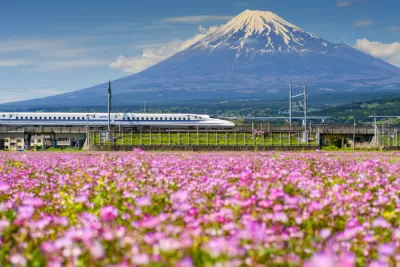The state of Washington has allocated funding from its 2019-2021 biennium transportation appropriations bill to study the creation of the Cascadia High Speed Rail Authority.

Stephen Fesler reports on the transportation spending approved by the Washington State Legislature at the conclusion of its 2019 legislative session.
"The appropriations bill will make $9.98 billion in transportation investments over the next two years," according to Fesler, "which is $300 million less than the governor’s $10.28 billion proposal."
A headlining inclusion in that number is up to $895,000 in funding to study the creation of a Cascadia High Speed Rail Authority, which would be charged with building a high-speed rail connection between Portland, Seattle, and across the border to Vancouver.
"Another $671,000 would need to come from other partners like the Province of British Columbia, State of Oregon, and business interests–the core high speed route is envisioned as linking the corridor from Portland to Vancouver, B.C., boosting business throughout," according to Fesler. "The state appropriation will not be released until funding from other partners is released, but it seems likely that the funding will come through."
The article includes a lot more detail on the other studies and projects funded by the appropriations bill.
See previous coverage of Cascadia Rail on Planetizen.
FULL STORY: Transportation Appropriations Bill Kickstarts Cascadia High Speed Rail Authority

Planetizen Federal Action Tracker
A weekly monitor of how Trump’s orders and actions are impacting planners and planning in America.

Map: Where Senate Republicans Want to Sell Your Public Lands
For public land advocates, the Senate Republicans’ proposal to sell millions of acres of public land in the West is “the biggest fight of their careers.”

Restaurant Patios Were a Pandemic Win — Why Were They so Hard to Keep?
Social distancing requirements and changes in travel patterns prompted cities to pilot new uses for street and sidewalk space. Then it got complicated.

Platform Pilsner: Vancouver Transit Agency Releases... a Beer?
TransLink will receive a portion of every sale of the four-pack.

Toronto Weighs Cheaper Transit, Parking Hikes for Major Events
Special event rates would take effect during large festivals, sports games and concerts to ‘discourage driving, manage congestion and free up space for transit.”

Berlin to Consider Car-Free Zone Larger Than Manhattan
The area bound by the 22-mile Ringbahn would still allow 12 uses of a private automobile per year per person, and several other exemptions.
Urban Design for Planners 1: Software Tools
This six-course series explores essential urban design concepts using open source software and equips planners with the tools they need to participate fully in the urban design process.
Planning for Universal Design
Learn the tools for implementing Universal Design in planning regulations.
Heyer Gruel & Associates PA
JM Goldson LLC
Custer County Colorado
City of Camden Redevelopment Agency
City of Astoria
Transportation Research & Education Center (TREC) at Portland State University
Camden Redevelopment Agency
City of Claremont
Municipality of Princeton (NJ)





























